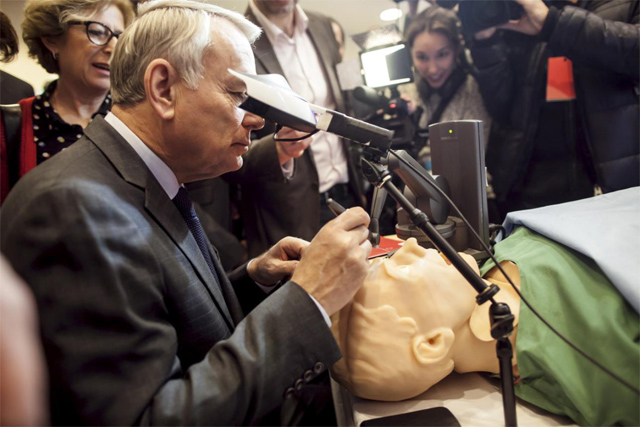A recently published report, authored by The RAND (Research ANd Development) Corporation, titled “Cataract Blindness and Simulation-Based Training for Cataract Surgeons“, provides an assessment of a global campaign, named HelpMeSee (HMS), to eliminate cataract blindness which is endemic in developing countries. Through an inexpensive, quick and effective procedure known as Manual Small Incision Cataract Surgery (MSICS), HMS can plans to provide help to those suffering from blindness due to cataracts. The combination of a shortage of well-trained surgeons who are familiar with this technique, and the fact that approximately one-half of all blindness cases in the world are due to cataracts, is expected to result in more than 32 million people world-wide requiring cataract surgery by the year 2020. So how do you quickly and affordably train surgeons all around the world to preform this procedure? Simple, a portable surgical training simulator that can immediately increase training output and efficacy.
 |
| Virtual Reality Eye Surgery Simulator Prototype Presented to French Prime Minister |
In an effort to provide high-volume training for MSICS, that is portable and affordable, HMS in a partnership with the French Institut National de Recherche en Informatique et en Automatique, have developed a high-fidelity training simulator that allows surgeons to quickly become proficient at the procedure. The simulator provides a highly realistic biomechanical model of the human eye, enabling surgeons to practice the motions of removing a cataract and replacing it with an artificial lens. Surgical training simulators have the potential to dramatically speed up training, they reduce the need for actual patients, and eliminate the need for real eyes to train on. The report lists a number of the simulator software’s features including:
- A physics-based computer model, which utilizes the best existing data along with HMS test data to produce high-fidelity simulation of eye geometry, tissue properties, instrument/tissue collision detection, cutting, tissue deformation, and fluids.
- A visualization model, which will use data, including high-definition video of cataract
surgeries, to create high-resolution, dimensionally accurate, photorealistic, and real-time
visual images of eyes, eye tissue, fluids, and instruments. - A haptics model, which will simulate the feel experienced by the surgeon during actual surgeries to deliver a realistic force feedback response.
![]() Get updates on Facebook
Get updates on Facebook ![]() Get tweets on Twitter
Get tweets on Twitter ![]() Contact us on ForgeFX
Contact us on ForgeFX
